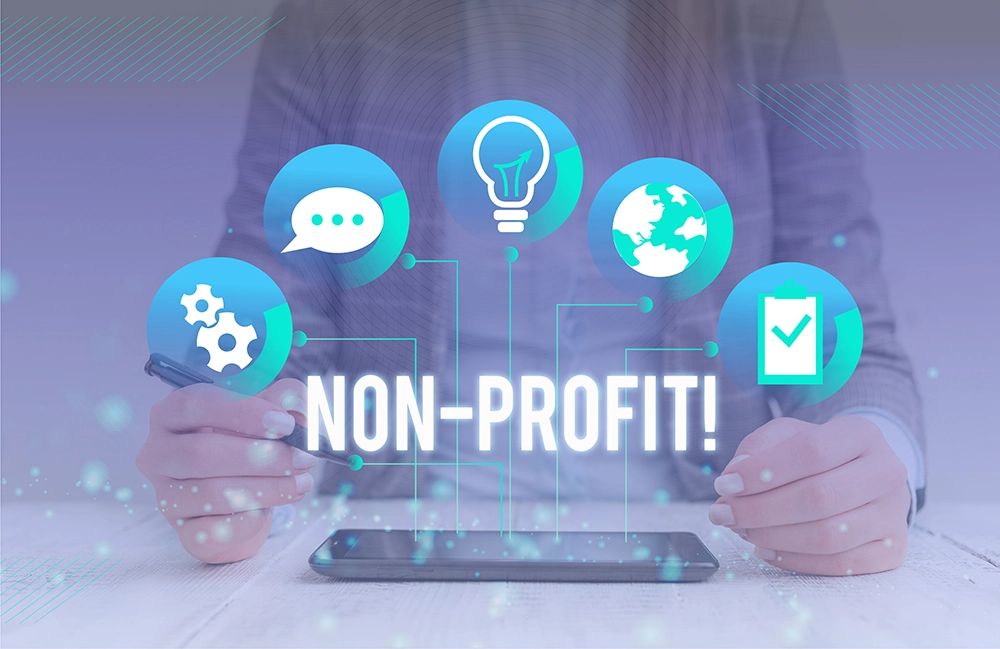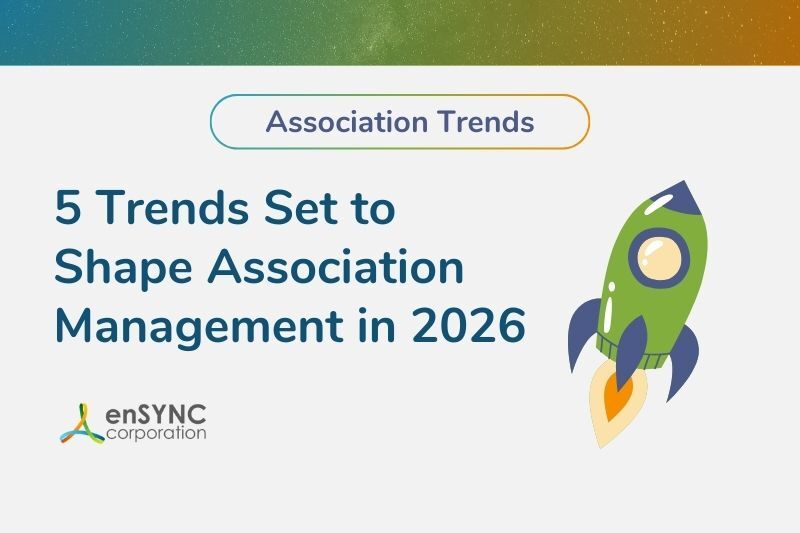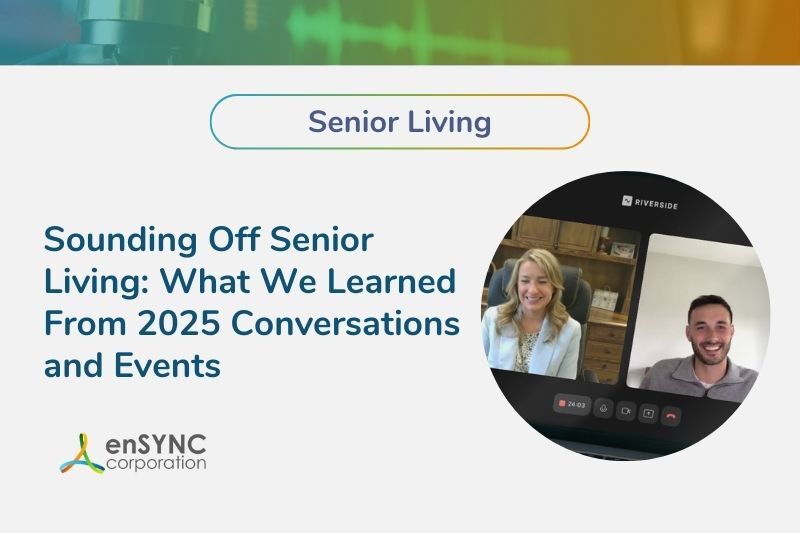Blog | Technology & digital transformation | Software solutions | Nonprofits & associations
8 Types of Nonprofit Software That Support Your Mission
May 17, 2023
|
Modern nonprofit software does more than just streamline processes, enhance reporting, increase visibility, and improve collaboration. It also leverages automation and AI to unlock additional functionality, enabling your teams to improve productivity with fewer resources. Read on to learn about eight types of nonprofit software and how they can maximize your organization’s impact on the communities it serves.
What to Look For When Choosing Nonprofit Software
Some general factors to consider when choosing nonprofit software include cost, extended support, system security, and a user-friendly interface. But choosing the right software requires going deeper so you can pick a solution that best aligns with your requirements.
Some specific factors to help you make the right choice include:
Nonprofit-Specific Features
It’s obvious that nonprofit organizations operate differently and have unique requirements. That’s why it’s a good idea to look for features most relevant to nonprofits, such as grant management, fund accounting, and donation management tools.
Integration Capabilities
Software that integrates shares real-time data to reduce data entry and minimize repetitive tasks. Benefits include saved time, reduced costs, fewer errors, and the use of combined metrics to provide a complete picture of your organization’s health.
Automation
Automation is becoming a standard feature in most software systems. For example, donor management software leverages automation to streamline communications, schedule reminders, and track donations.
Another example is automated event registration, ticketing, and notification features provided by event management software. Lastly, modern fundraising software applications use automation to set up recurring donations, automate emails, and schedule and post content automatically.
AI-Powered Features
AI is another modern tool that unlocks new features and enhances the software experience.
Examples include:
- AI-powered predictive analytics that analyze data to forecast program impacts, donation trends, and budget outcomes
- AI-enhanced tools that personalize communications for strategic marketing campaigns
- Chatbots that assist visitors with questions about a nonprofit’s programs, events, products, services, and volunteer opportunities
Cloud-Based Functionality
Cloud-powered software allows your team to connect from any location to access data and collaborate on shared projects. Benefits include cost-effectiveness, easy scaling, advanced integration capabilities, and robust security protocols that safeguard sensitive data.
Additional Costs
The price of software sometimes goes beyond subscription costs. Depending on your chosen system, there may be additional implementation, integration, and support expenses.
8 Types of Nonprofit Software Systems That Support Your Mission
Customized nonprofit software is the best choice for most organizations because they are built with specific features that help them achieve their mission.
Some options for nonprofits include:
1. Financial Software
Numerous cloud-based nonprofit accounting software solutions are now available that facilitate all aspects of financial management with features that include:
- Fund accounting that tracks and reports activities by fund, grant or program
- Budgeting and forecasting tools that help predict program outcomes and fundraising trends
- Features that enable users to track and manage grants from application to closeout
- Customizable dashboards, financial statements, and drill-down reports
- Integration and automation features
Overall, financial software should give nonprofits total visibility into how resources are allocated and used. Options include Sage Intacct, QuickBooks, and FreshBooks.
All systems have their benefits and drawbacks. Just be sure to choose a solution that enables financial reporting according to Generally Accepted Accounting Principles (GAAP) or International Financial Reporting Standards (IFRS) guidelines.
2. Learning Management Systems
Learning management systems enable nonprofits to manage continuing education programs easily and efficiently. Look for applications that facilitate online course delivery, offer assessments and feedback, and provide additional resources to students.
3. Fundraising and Prospect Reach Software
Prospect reach and fundraising management software identifies potential donors, automates processes, and tracks progress towards predefined fundraising goals.
Prospect reach software additionally allows organizations to refine their donor database by inputting additional information such as contribution history, net worth, and areas of interest. These capabilities help organizations prioritize donors for targeted fundraising campaigns through insights that identify their preferences and motivations.
Maximizing donor retention rates is another critical aspect of successful fundraising. Some prospect reach software systems help nonprofits monitor this important metric by providing data-driven insights that help teams maximize their retention strategy.
4. Member Management Systems
Association management systems handle multiple aspects of a nonprofit organization on a single interface. Advanced solutions include advanced constituent relationship management features, event management and marketing tools, and automated member communications. Some systems also allow organizations to publish exclusive member-only content, track online donations, and connect to online fundraising platforms.
5. Digital Advocacy Software
Digital advocacy software helps nonprofits generate support for critical issues by enabling them to engage and mobilize supporters to take action.
Features include campaign creation, petitions, email campaigns, and online tools that help users show support with a few clicks. Other features include campaign tracking and advanced analytics that help teams measure the impact of their advocacy efforts.
6. Website Content Management Systems
Content management systems like WordPress and Drupal allow teams to easily publish articles, donation pages, and online donation forms without coding skills. When integrated with membership systems or marketing software, users can additionally leverage other features. These include scheduling tools, content targeting, user tracking, and reporting on key metrics like website traffic and engagement.
7. Marketing Software
Marketing software enables nonprofits to reach and engage with more of their target audience to increase awareness, drive donations, and boost engagement.
Key features include content and social media tools, automated email communications, retargeting and ad analytics tools, user segmentation, and scoring. In addition, some systems offer marketing and publishing capabilities in one solution, enabling organizations to integrate multiple processes on a single interface.
Maximize your organization’s impact with integrated software built for nonprofits.
The right software solution stack can make all the difference in your organization’s impact on the communities it serves.
enSYNC has helped nonprofit professionals maximize the potential of their organization for over 25 years. Contact us to schedule a demo and we’ll show you how nonprofit software solutions can easily improve productivity, save time, and reduce costs.

Meet Josh Kozinski, the Director of Business Development at enSYNC. With expertise in Sage Intacct, iMIS, and supporting technologies, Josh’s mission is to simplify complex processes by transforming rogue spreadsheets and databases into streamlined, automated solutions. His dedication to delivering strategic solutions aligns perfectly with enSYNC’s commitment to efficient and innovative nonprofit management. Josh is not just a leader at enSYNC; he’s actively involved in prominent industry organizations. By staying connected with these networks, Josh remains at the forefront of industry trends and best practices. In addition to his professional pursuits, Josh serves on the Membership Committee for the Dallas Fort Worth Association Executives, giving back to the industry he’s passionate about. Away from the office, Josh is an athlete at heart. He pursued his college education at Central Michigan, where he played basketball. However, what Josh values most are his relationships with his family and his faith in God. Josh is always open to discussions, whether you’re seeking innovative solutions for nonprofit management, exploring industry trends, or simply connecting with like-minded professionals.
Recent Posts

5 Trends Set to Shape Association Management in 2026
As 2026 begins, associations are standing at the edge of some major shifts. Member expectations are changing, technology keeps opening new...

The Best of the Blog 2025 — A Year in Review
From forward-looking trend analyses to powerful case studies and thought-provoking conversations, the enSYNC blog featured a host of great content in...
Enjoying our blog?
At enSYNC, we want to empower associations and nonprofits to make well-educated decisions. If you want our industry knowledge (and other free guides) sent directly to your inbox, fill out the form below.



